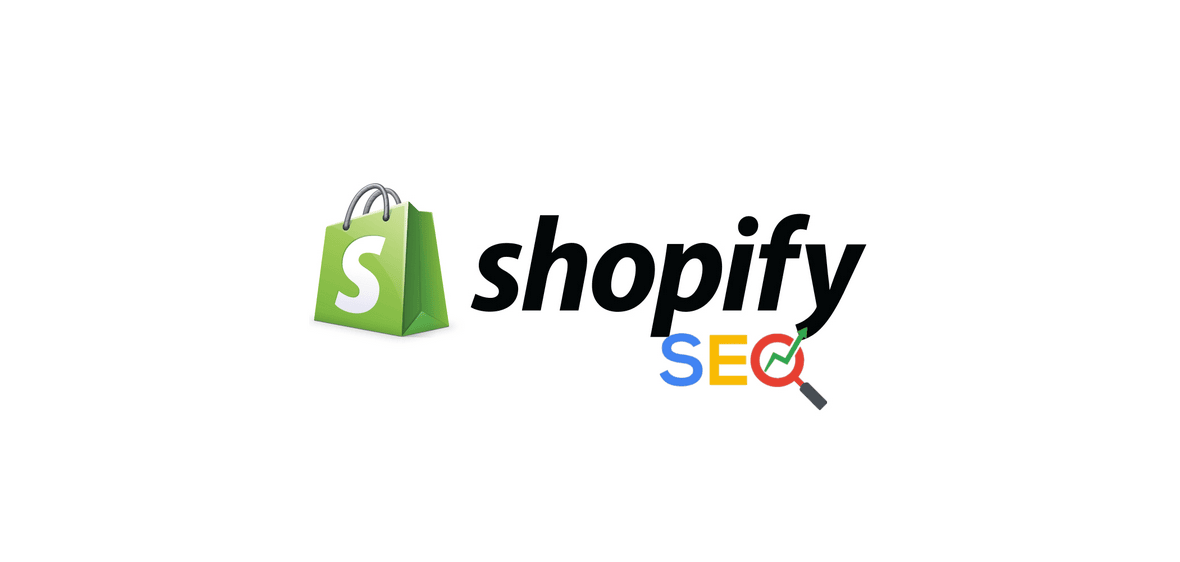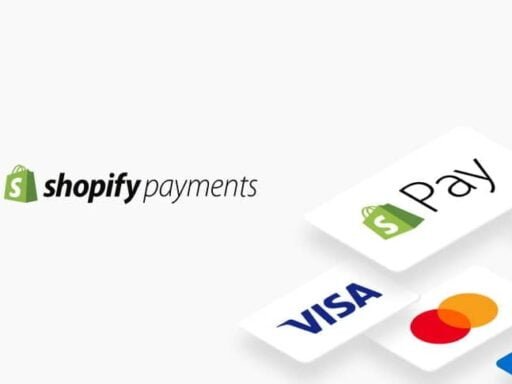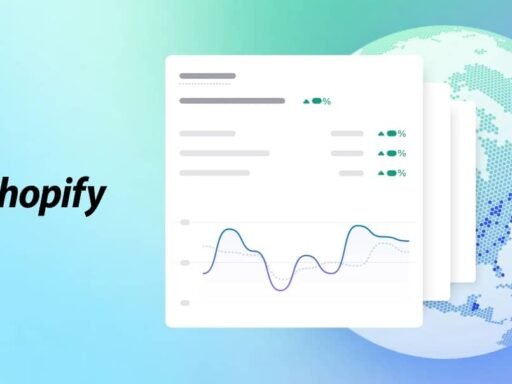Did you know that Google processes over 3.5 billion daily searches? That’s a huge number, and it highlights the importance of optimizing your Shopify store for search engines. SEO, or search engine optimization, is the key to increasing your visibility and driving organic traffic to your online store.
When your store is optimized for SEO, it becomes more likely to appear in search engine results pages (SERPs). This means that potential customers searching for products or services related to your store are more likely to find you. And with search engines driving up to 80% of all website traffic, you can’t afford to ignore this crucial aspect of online marketing.
In this article, we will guide you through the process of optimizing your Shopify store for SEO. We’ll cover the basics of SEO, provide you with checklists for on-page, technical, off-page, and local SEO, and even share some bonus top tips for 2024. So let’s get started and unlock the potential of search engine optimization for your Shopify store!
Key Takeaways:
- Optimizing your Shopify store for SEO is crucial for driving organic traffic.
- SEO helps your store appear in search engine results pages (SERPs).
- Follow the provided checklists for on-page, technical, off-page, and local SEO.
- By implementing these SEO strategies, you can increase your store’s visibility and drive more targeted traffic to your online store.
The Importance of SEO for Your Shopify Store
Optimizing your Shopify store for SEO is crucial in driving organic traffic from search engines. With SEO, you have the opportunity to appear in search engine results pages (SERPs), improving your visibility and attracting potential customers.
Why is SEO so important for your Shopify store? Here are a few key reasons:
- Organic Traffic: SEO helps you attract high-quality traffic that is more likely to convert into customers. By appearing in relevant search results, you can reach users actively looking for products or services like yours.
- Visibility: Without SEO, your store may not show up in SERPs, reducing your online visibility and making it difficult for potential customers to find you. SEO ensures that your store gets the visibility it deserves.
- Higher Rankings: Optimizing your store for SEO increases the chances of ranking higher in search results. The higher you rank, the more visibility and credibility you gain, improving your chances of attracting customers.
In short, SEO is a powerful tool that drives organic traffic, improves visibility, and boosts your chances of ranking higher in search results. By optimizing your Shopify store for SEO, you can increase the visibility of your products or services and attract more customers to your online store.
| Benefits of SEO for Your Shopify Store | Benefits |
|---|---|
| Organic Traffic | High-quality traffic that is more likely to convert |
| Visibility | Increased online visibility and brand exposure |
| Higher Rankings | Better chances of ranking higher in search results |
SEO Basics Checklist
To start optimizing your store, you need to follow an SEO basics checklist. This checklist includes:
- Setting up Google Search Console: Monitor site traffic and gain valuable insights into how users find your store.
- Verifying your domain: Establish trust with search engines and ensure your store is recognized as a legitimate online presence.
- Submitting a sitemap: Help search engines understand the structure and organization of your website.
- Setting up Google Analytics: Track website engagement metrics and gain a deeper understanding of your audience.
- Considering SEO tools like Moz and Ahrefs: These tools can provide additional insights and help you optimize your store effectively.
- Performing a site search: Verify that your store is indexed by search engines and ensure your content is being crawled.
- Optimizing on-page SEO elements: Ensure that your title tags, meta descriptions, and other on-page elements are well-optimized for search engines.
| Checklist Item | Description |
|---|---|
| Setting up Google Search Console | Monitor site traffic and gain insights into user behavior. |
| Verifying your domain | Establish trust with search engines. |
| Submitting a sitemap | Help search engines understand your website structure. |
| Setting up Google Analytics | Track website engagement metrics and analyze audience data. |
| Considering SEO tools like Moz and Ahrefs | Utilize additional tools for effective optimization. |
| Performing a site search | Ensure your store is indexed and crawled by search engines. |
| Optimizing on-page SEO elements | Optimize title tags, meta descriptions, and other on-page elements. |
By following this SEO basics checklist, you will lay a strong foundation for optimizing your Shopify store and improving its visibility in search engine results.
On-Page SEO Checklist
Improving your search rankings requires effective on-page SEO strategies. By following this checklist, you can optimize your webpages to enhance their visibility in search results.
- Conduct keyword research: Target relevant search terms that align with your content and customer intent.
- Optimize heading tags (H1): Use heading tags to structure your content and place your primary keyword in the H1 tag.
- Write compelling title tags and meta descriptions: Craft attention-grabbing titles and concise, informative meta descriptions that entice users to click on your pages.
- Include target keywords in page URLs: Use search-engine-friendly URLs that incorporate your target keywords.
- Write descriptive alt text for images: Describe your images with relevant keywords to make them more accessible to search engines.
By implementing these on-page SEO practices, search engines can better understand the content of your webpages, positively impacting your search rankings. Let’s take a look at an example:
| Webpage | Keyword in H1 | Title Tag | Meta Description | URL | Image Alt Text |
|---|---|---|---|---|---|
| Our Story | Our Story | Welcome to XYZ Company – Learn Our Story | XYZ | Discover the history and values behind XYZ Company. Learn Our Story and how we pioneered innovative solutions since 1990. | www.xyz.com/our-story | Our Story – XYZ Company |
In the example above, the webpage “Our Story” utilizes on-page SEO techniques throughout. The H1 tag includes the target keyword “Our Story,” while the title tag, meta description, URL, and image alt text incorporate relevant keywords. This cohesive optimization strategy increases the chances of ranking higher in search results.
Technical SEO Checklist
Optimizing the technical aspects of your website is essential for effective SEO. To ensure that your Shopify store is well-optimized, follow this technical SEO checklist:
Create a Logical Internal Linking Strategy
Internal linking plays a crucial role in guiding search engine crawlers through your website and establishing a hierarchy of importance for your pages. Develop a logical internal linking strategy, especially with your menus, to provide a seamless browsing experience for visitors and search engines alike.
Set Up Google Search Console and Bing Webmaster Tools
Google Search Console and Bing Webmaster Tools are valuable tools that provide insights into how search engines view and interact with your website. By setting up these tools, you can monitor your site’s performance, identify indexing issues, and receive important notifications from search engines.
Submit a Sitemap
A sitemap is a file that lists all the URLs on your website, helping search engines understand its structure and content. Submitting a sitemap to search engines ensures that all of your website’s pages are crawled and indexed. Use a sitemap generator or a Shopify app to create and submit your sitemap.
Set Up Google Analytics
Google Analytics provides valuable insights into your website’s performance, user behavior, and traffic sources. By setting up Google Analytics, you can track key metrics, such as organic traffic, bounce rate, and conversion rates. These insights can guide your SEO strategy and help you make data-driven decisions.
Consider SEO Tools like Moz and Ahrefs
SEO tools like Moz and Ahrefs offer advanced features for keyword research, competitor analysis, and tracking your website’s performance. Consider using these tools to gain deeper insights into your SEO efforts, identify opportunities for improvement, and stay ahead of the competition.
Check Site Indexation
Ensure that your website is indexed by search engines by performing a site search using the “site:” operator. This search query will show you the indexed pages of your site. If any pages are missing, troubleshoot indexation issues, such as incorrect robots.txt directives or issues with your site structure.
Take Advantage of Built-in SEO Features in Shopify
Shopify offers built-in SEO features that can enhance your store’s visibility in search results. Make sure to optimize your page titles, meta descriptions, URLs, alt tags for images, and other on-page SEO elements using Shopify’s SEO settings. Leverage these features to improve your website’s organic search performance.
| Technical SEO Checklist |
|---|
| – Create a Logical Internal Linking Strategy |
| – Set Up Google Search Console and Bing Webmaster Tools |
| – Submit a Sitemap |
| – Set Up Google Analytics |
| – Consider SEO Tools like Moz and Ahrefs |
| – Check Site Indexation |
| – Take Advantage of Built-in SEO Features in Shopify |
Off-Page SEO Checklist
Off-page SEO is an essential aspect of optimizing your Shopify store for search engines. By focusing on external factors that impact your search rankings, you can improve your website’s authority, trustworthiness, and visibility. This checklist provides you with actionable strategies to enhance your off-page SEO:
Active Link Building
Actively building high-quality backlinks from reputable websites can significantly improve your search rankings. Consider the following approaches:
- Reach out to industry influencers and request backlinks
- Guest blog on relevant websites and include a link back to your store
- Create partnerships or collaborations with complementary businesses
Passive Link Building
Passive link building involves creating valuable content that naturally attracts backlinks. Focus on producing high-quality content that is shareable and informative. This can include blog posts, guides, infographics, or videos that align with your target audience’s interests and needs.
SEO Plan for Store Growth
Developing an SEO plan tailored to scale your store’s growth is crucial for long-term success. Consider the following strategies:
- Regularly update and optimize your website content to maintain relevance
- Invest in social media marketing to increase brand visibility and engagement
- Implement email marketing campaigns to nurture customer relationships
- Utilize influencer marketing to reach a wider audience
These off-page SEO strategies will help strengthen your online presence and improve your search rankings. By implementing this checklist, you can enhance your website’s authority and drive organic traffic to your Shopify store.
Local SEO Checklist
If you have a physical store or serve a specific local area, local SEO is essential for your Shopify store. By following this checklist, you can optimize your store for local search results and attract targeted traffic to your physical location.
1. Optimize your Google My Business listing
Create a Google My Business profile and provide accurate information about your store, including the business name, address, phone number, and operating hours. Add high-quality images and encourage customers to leave reviews.
2. Create location-specific landing pages
Create landing pages for each location you serve. Include relevant keywords and information about the area, such as local attractions or events, to help search engines understand the relevance of your store to local searches.
3. Ensure consistency in NAP citations across directories
NAP stands for name, address, and phone number. Ensure that your NAP information is consistent across various online directories, including your website, Google My Business, Yelp, and other local directories. Consistency builds trust with search engines and customers.
4. Get positive online reviews
Encourage your customers to leave reviews on platforms like Google My Business, Yelp, and other review sites. Positive reviews not only enhance your reputation but also improve your store’s visibility in local search results.
| Benefits of Local SEO Checklist |
|---|
| 1. Improved visibility in local search results |
| 2. Targeted traffic to your physical store |
| 3. Enhanced online reputation through positive reviews |
| 4. Increased customer trust and confidence |
By following this local SEO checklist, you can significantly improve your Shopify store’s visibility in local search results. Optimize your Google My Business listing, create location-specific landing pages, ensure consistency in NAP citations, and encourage positive online reviews to attract more customers to your physical store.
Bonus: SEO Top Tips for 2024
Stay ahead of the game with these top SEO tips for 2024. By implementing these strategies, you can adapt to the ever-changing SEO landscape and improve your Shopify store’s search rankings.
1. Focus on Mobile Optimization
With the increasing use of mobile devices, it’s crucial to optimize your website for mobile users. Ensure your site is responsive, load times are fast, and the design is user-friendly on smaller screens.
2. Create High-Quality and Relevant Content
Content is still king in SEO. Focus on producing high-quality, informative, and engaging content that provides value to your target audience. Incorporate relevant keywords naturally and ensure your content answers users’ queries.
3. Prioritize User Experience
User experience (UX) plays a significant role in SEO. Optimize your site’s navigation, improve page loading speed, enhance readability, and make sure your website is accessible and easy to navigate.
4. Leverage Voice Search Optimization
Voice search is becoming increasingly popular, thanks to devices like smart speakers and virtual assistants. To optimize for voice search, include natural language keywords, answer frequently asked questions, and focus on conversational content.
5. Optimize for Featured Snippets
Featured snippets are snippets of information that appear at the top of search results, providing users with quick answers to their queries. Optimize your content to increase the chances of appearing in featured snippets by structuring it in a question-and-answer format and providing concise, relevant answers.
6. Invest in Website Speed and Performance
A fast-loading website not only improves user experience but also has a positive impact on SEO. Minimize page load times by optimizing images, reducing unnecessary code, and leveraging caching techniques.
By following these SEO top tips for 2024, you’ll be well-equipped to improve your Shopify store’s search rankings and drive more organic traffic to your website.
Conclusion
Optimizing your Shopify store for SEO is crucial for driving organic traffic and increasing your online visibility. By following the SEO checklists provided in this article, you can ensure that your store is well-optimized for search engines and positioned for success. Start implementing these Shopify SEO fundamentals today and watch your traffic and sales grow.
FAQ
Why is SEO important for my Shopify store?
SEO is important for your Shopify store because it drives organic traffic from search engines, leading to high-quality traffic that is more likely to convert. Without SEO, your store may not appear in search engine results pages (SERPs), causing you to miss out on potential customers.
What is included in the SEO basics checklist for Shopify?
The SEO basics checklist for Shopify includes setting up Google Search Console to monitor site traffic, verifying your domain, submitting a sitemap, setting up Google Analytics to track website engagement, and considering SEO tools like Moz and Ahrefs.
What elements should I optimize for on-page SEO?
For on-page SEO, you should conduct keyword research to target relevant search terms, optimize your heading tags (H1), write compelling title tags and meta descriptions, include target keywords in your page URL, and write descriptive alt text for images.
What does technical SEO involve?
Technical SEO involves optimizing the technical aspects of your website. This includes creating a logical internal linking strategy with your menus, setting up Google Search Console and Bing Webmaster Tools, submitting a sitemap, setting up Google Analytics, and considering SEO tools like Moz and Ahrefs.
How can I improve my off-page SEO?
To improve your off-page SEO, you can engage in active link building by getting backlinks from reputable websites and passive link building by creating high-quality content that naturally attracts backlinks. It’s also important to build an SEO plan to scale your store’s growth.
Why is local SEO important for my Shopify store?
Local SEO is important if you have a physical store or serve a specific local area. It helps your store appear in local search results, driving more targeted traffic to your physical location. You can optimize your local SEO by optimizing your Google My Business listing, creating location-specific landing pages, ensuring consistency in NAP (name, address, phone number) citations across directories, and getting positive online reviews.
What are the top SEO tips for 2024?
The top SEO tips for 2024 include focusing on mobile optimization, creating high-quality and relevant content, prioritizing user experience, leveraging voice search optimization, optimizing for featured snippets, and investing in website speed and performance.





